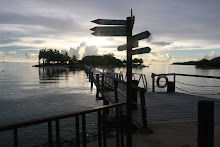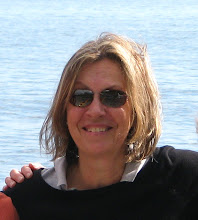 In January of 2012 or 2013 we shall be returning to Burma. It will have been five years since we were last there in 2007. I am already excited about this for Burma is possibly my favourite location. We shall go to the deep south this time, visit the watery locale of the sea gypsies (Salon or Moken as they call themselves) of the Myeik Archipelago in a Thai dive boat. We will snorkel, swim, eat fresh seafood daily, and hopefully this time go ashore on Lampi Island, one of the least disturbed island habitats of Southeast Asia, designated recently as a national park. This tour will take us to the north eastern tribal villages, to Bagan, Inle Lake, the colonial towns of Kalaw and Pyin U Lwin, and to many other magnificent bea
In January of 2012 or 2013 we shall be returning to Burma. It will have been five years since we were last there in 2007. I am already excited about this for Burma is possibly my favourite location. We shall go to the deep south this time, visit the watery locale of the sea gypsies (Salon or Moken as they call themselves) of the Myeik Archipelago in a Thai dive boat. We will snorkel, swim, eat fresh seafood daily, and hopefully this time go ashore on Lampi Island, one of the least disturbed island habitats of Southeast Asia, designated recently as a national park. This tour will take us to the north eastern tribal villages, to Bagan, Inle Lake, the colonial towns of Kalaw and Pyin U Lwin, and to many other magnificent bea utiful places.
utiful places.
Several years ago a close friend came on the tour, along with my grown son Jacob. It proved to be a very special trip. We flew into Yangon and early one morning took the Bagan Airline flight to Mandalay. From there we took another flight up to Khamti on the Indian border in the north. Then a road trip to the Chetwin River and a two hour drift downstream to the landing for Lahe.
There we bundled into the backs of pickups and bumped the 9 hour trip overland into the mountains. "The truck is dreadful with high metal seats on which one cannot stretch, or even bend, ones legs...for lack of space.....arrive thoroughly black and blue. I have t
 o stand up four times and
o stand up four times and  kick the back window to beg the drivers to slow down. Finally, in desperation, I threaten to report them......" We visited the mountain living Naga at their New Year's festival. I made postcards with my little printer and distributed them to outstretched hands and happy faces. These people, small and wirey, walked many kilometres in from the hills for the festival. The streets of Lahe were thronged with men and young women in their festive wear. The dances carried on into the early hours of the morning. It was very cold after dark high up there in the mountains in January and we wore touques and down jackets. The dances took place around huge fires.
kick the back window to beg the drivers to slow down. Finally, in desperation, I threaten to report them......" We visited the mountain living Naga at their New Year's festival. I made postcards with my little printer and distributed them to outstretched hands and happy faces. These people, small and wirey, walked many kilometres in from the hills for the festival. The streets of Lahe were thronged with men and young women in their festive wear. The dances carried on into the early hours of the morning. It was very cold after dark high up there in the mountains in January and we wore touques and down jackets. The dances took place around huge fires.
Medical care is virtually non-existant in the Burman hills. When we walk in to a village we always take necessary items like salt, asperin, vitamins, (balloons: not necessary but the kids adore them.) We usually visit orphanages and schools and often make donations.
Inspite of lives lived in abject poverty, frequently cut short by illness and accident, the people are kind and interested in the outside world. There exists a magic there in the countryside and one can find it as well in the green shaded urban areas.
Mt. Popa, home of the gnats, is a spectacular place, and we stay in a hotel (across the divide) that perches on the mountain side with a pool and beautiful restaurant. We will also see two colonial towns: Pyin U Lwin and Kalaw. In these towns the British influence on architecture, city planning and design, gardening and plant variety is profound.
Then there is Inle Lake, home of the giraffe neck ladies, as well as many centres of craft production, from silver working to weaving silk. Here we will stay in a hotel that sits right on the lake and will pull up there in our boats every evening.
 The villagers produce their staples in "floating gardens"
The villagers produce their staples in "floating gardens"

This tour to Burma represents over 16 years now of hard work, changing itineraries, hotels, and generally making it right. I have taken tours there 10 times. It is truely one of our best tours...and worth every penny. I really hope some of you will consider coming since it is a really special destination.
See our website: Sacajawea Tours




